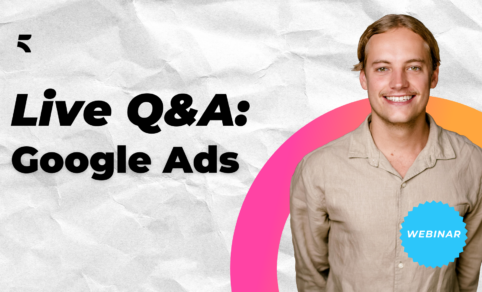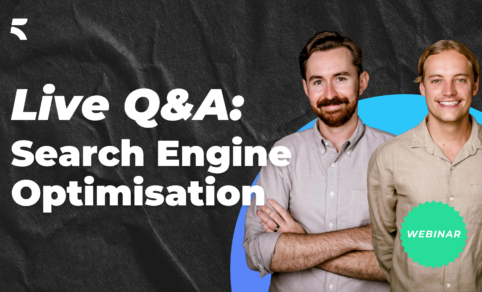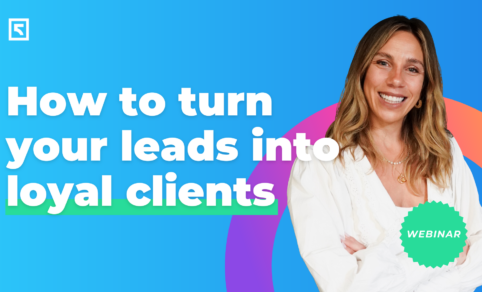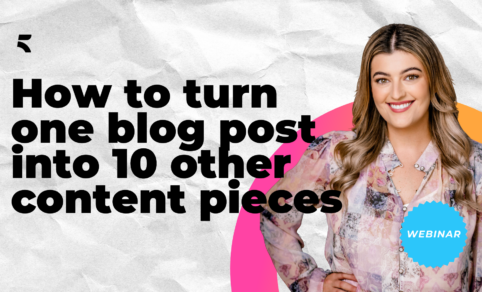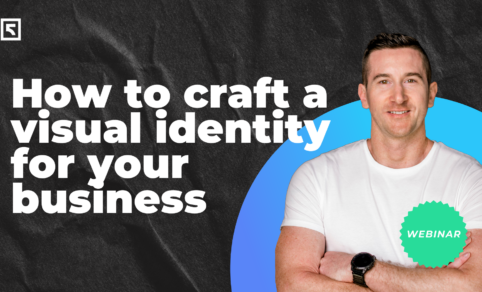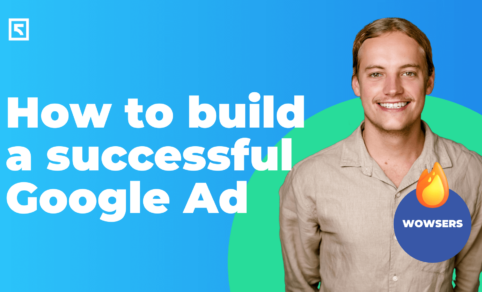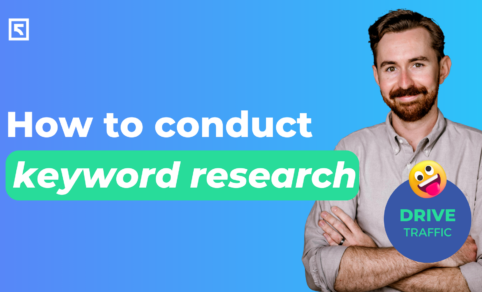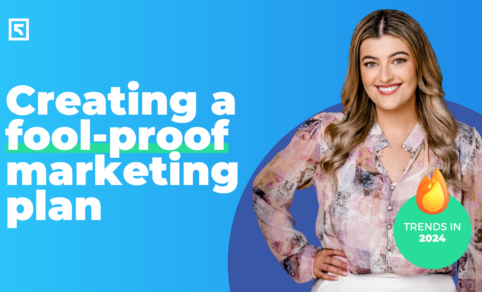Do you struggle with how to convert leads and enquiries into sales? If you’re nodding your head, you’re not alone.
Converting leads into loyal paying customers is more crucial (and challenging) than ever. Our Head of Sales and Strategy, Gabbi, joined Jon for this month’s webinar and shared their wisdom on mastering the art of lead conversion.
They unveiled the essential components of an effective sales strategy, focusing on the sales funnel and the common challenges that many businesses face in converting their leads into clients. Whether you’re just starting out or looking to refine your sales approach, we can help you overcome those obstacles and drive real growth in your business.
Converting leads into sales is essential for business growth and profitability. And, as much as we would like to pretend otherwise, it is unavoidable!
Watch the webinar in full or keep on reading to learn how to convert leads into sales without feeling sleazy, and how to confidently communicate the unique value you have to offer so you can help more people!
What is a Sales Funnel?
At the heart of every successful sales strategy lies the sales funnel—a concept that is as vital as it is misunderstood. So, what is a sales funnel?
Simply put, a sales funnel represents the journey a potential customer takes from the first point of contact with your business to the final purchase. A sales funnel as a process that guides potential customers from initial awareness of your product or service through to making a purchase. The funnel is wide at the top, representing the large number of potential leads that come across your business, and it narrows as you move down, representing the steps that filter these leads into sales. Understanding this journey is key to improving your lead conversion rates.
There are two crucial factors that can make or break your sales process… the quality of your leads and the effectiveness of your sales strategy. Having a solid pipeline of high-quality leads is only half the battle. The other half is ensuring that your sales process is designed to convert those leads into sales.
Typical Stages of a Sales Funnel
Awareness
This is where potential customers first learn about your business or offerings. They may encounter your brand through marketing, social media, or word of mouth.
Interest
At this stage, leads show interest in your product or service by seeking more information. They might visit your website, sign up for a newsletter, or engage with your content. This is where you share your magic!
Consideration
Here, the leads are deciding whether your magic meets their needs. They might compare your product with competitors, read reviews, or request a demo or free sample.
Intent
Potential customers are now seriously considering purchasing. They may reach out to you for more detailed information, enquire about pricing or process, or ask specific questions.
Decision
This is the final stage where your lead decides to make a purchase. Effective sales strategies and addressing any remaining objections are crucial at this point to close the sale.
The funnel metaphor proves that not all leads will make it through each stage to become customers. As they move down the funnel, the number of leads decreases, but those who remain are more likely to convert into paying clients. The goal of a well structured sales funnel is to efficiently guide leads through these stages, addressing their needs and concerns at each point to maximise conversions.
Common Challenges of Lead Conversion
Despite the importance of lead conversion, many businesses struggle with common challenges that hinder their success. You need to understand your buyer journey and what they are thinking, feeling and looking for in each stage.
Common issues we see are inconsistent follow ups and not fully understanding your buyer’s pain points—both of which are critical in the lead conversion process. Without a consistent and strategic approach to enquiry follow ups, even the best leads can slip through the cracks. And a lack of deep understanding of what your potential customers truly need can prevent you from effectively addressing their concerns, ultimately leading to lost sales opportunities.
These obstacles are common, but they’re not insurmountable. By recognising and addressing these challenges, you can begin to refine your sales funnel and increase your chances of turning those leads into loyal, paying customers.
The Importance of Quick Follow Up
As we know, the early bird catches the worm. In terms of sales, this couldn’t be more accurate.
Quick follow up with leads is not just a nice-to-have; it is essential. Gabbi, our Sales Manager, was recently in the market for a new service. One business stood out and not because of their flashy ads or smooth sales pitch, but because they followed up with her almost immediately. That prompt response didn’t just catch her attention—it made her feel valued and, ultimately, led to her decision to buy.
Why does speed matter so much? It’s simple, your leads are often ready to make a decision quickly, and the first business to respond can set the tone for the entire relationship. Following up within 24 hours shows your potential customers that you’re attentive, reliable, and ready to meet their needs. It’s a small action that can have a big impact on your conversion rates.
On the flip side, delaying your response can have serious consequences. A slow follow up on a lead can destroy your customer confidence. In industries where quick action is critical, like trades or real estate, a delayed response can be the difference between you closing a deal and losing a sale to a proactive competitor.
Customers want to feel like they’re a priority, not just another name on a list. When you take too long to follow up, it sends the message that their business isn’t important to you. And let’s be honest, if you don’t make them a priority, someone else will. In an age where everyone expects instant gratification, your response time can make or break your sales process.
Here are some more tips for stopping your leads going cold.
Understanding Customer Pain Points
Sales isn’t just about numbers and products, it is ultimately about people and relationships. And the key to connecting with people? Empathy. You need to truly understand your potential customer’s pain points, both on a business and personal level. This isn’t just about knowing what they need, it’s also about understanding why they need it.
When you take the time to understand your ideal customer’s challenges, you’re not just selling a product or service; you’re offering a solution that genuinely improves their life or business. This level of understanding helps build trust, which is the foundation of any successful sales relationship.See beyond the surface and connect with what really matters to your clients or customers.
Of course, understanding your potential customer’s problems starts with asking the right questions. But it’s not just about what you ask—it’s about how you ask it. There is an art to asking thorough, insightful sales questions without overwhelming your leads.
The goal is to uncover the root of their problem, which often requires going beyond the obvious. Instead of asking surface level questions, dig deeper to understand the full picture. But be careful not to bombard your lead with too many questions at once. The key is to be strategic, thoughtful, and genuinely curious about their needs. By doing so, you can uncover information that not only helps you convert your lead into a sale, but also positions you as a trusted advisor who truly understands their business.
Reframing Common Sales Objections
Let’s face it—objections are a sucky but natural part of any sales conversation. But instead of dreading them, what if you saw them as buying signals? Rather than viewing them as roadblocks, consider objections as opportunities to better understand your lead’s concerns and provide solutions that meet their needs.
This shift in mindset is crucial. When a lead raises an objection, they are essentially saying, “I’m interested, but I need more information or reassurance.” Your job is to listen, address their concerns, and guide them toward making a confident decision. Here is how to convert leads into sales by handling the most common sales objections gracefully and respectfully.
It’s too expensive
One of the most common objections you’ll face is price. But remember, when a lead says, “It’s too expensive,” they’re not just talking about cost—they’re questioning the value. This is your chance to shift the conversation from price to value and ROI. Focus on what the lead stands to gain from your product or service. Highlight how it can save them time, increase their revenue, or solve a pressing problem. By demonstrating the tangible benefits, you can help your potential clients see that the investment is worth it.
Is now the right time?
Timing can be a tricky objection to handle. When a lead is unsure whether now is the right time to buy, it is important to address the cost of their inaction. What will happen if they wait? Will they miss out on a critical opportunity, fall behind the competition, or face higher costs down the road? By framing the conversation around the risks of delaying, you can create a sense of urgency and help the lead understand why acting now is in their best interest.
I’m not sure if this is right for me
Doubt is a natural part of the decision making process, especially when a lead is considering something new and they don’t fully understand it. To overcome this objection, use testimonials and case studies to provide proof of concept. Share stories of other clients who faced similar challenges and saw positive results after working with you. These real-life examples can help reassure the client that they’re making the right choice.
I need to check with my partner/boss
Finally, there’s the classic, “I need to check with my partner/boss” objection. This often comes up when the decision maker isn’t the only person involved in the purchase. The only way around this is that you identify the decision makers early in the sales process. Once you know who’s involved, you can empower your main contact with the information they need to champion your product or service internally. Whether it’s providing a detailed proposal or offering to speak directly with the other decision makers, your goal is to make it easy for them to get everyone on board.
Nurturing Long Term Relationships After the Sale
Closing a sale isn’t the end of the journey, it is actually just the beginning! Retaining your existing clients or customers is far more cost effective than constantly chasing new ones. When you view the sale as the start of a relationship, you open the door to repeat business, referrals, and a steady stream of revenue.
Think about it…a client who feels supported and valued after the sale is more likely to stick around and recommend your services to others. But how do you ensure that your relationship remains strong? The answer lies in consistent communication and a genuine commitment to solving your client’s ongoing problems.
Maintaining a strong post sale relationship requires effort, but it’s well worth it. Start by continuing the conversation and don’t just ghost them after the contract is signed. Check in regularly to see how things are going and if there are any additional ways you can help. Be proactive in offering solutions to new challenges your client may face. This not only reinforces your value but also positions you as that trusted advisor who’s always looking out for their best interests.
Another key strategy is to keep providing value. Whether it’s through free and helpful content, personalised advice, or exclusive offers, show your clients that you are invested in their success. This ongoing engagement helps build loyalty and ensures that when they’re ready to make their next purchase, you will be the first person they call.
Satisfied customers are one of the best sources for generating referrals. When your customers have a positive experience, they are more likely to recommend you to others. Asking for referrals at the right time, typically after a successful sale or when the client expresses satisfaction, can be highly effective.
You could also offer incentives to those who refer you to new leads. This could be in the form of discounts, special offers, or even a simple thank you gesture, which can encourage clients to spread the word about your services or products.
Turn that Lead to Conversion
From understanding the sales funnel to building strong post-sales relationships, every step of the sales process plays a vital role in turning that leads to conversion. You need a well structured sales process, know the power of quick follow up, and understand the need for empathy in sales conversations.
By embracing these strategies, you can not only increase your conversion rates but also build lasting relationships with your clients or customers, setting the foundation for long term success. Remember, the sale is just the beginning of the journey. It is how you nurture and maintain your client relationships will determine your success in the long run.
If you are ready to take your sales process to the next level with a great looking and high performing digital presence, don’t hesitate to reach out to us at Five by Five. Our team of digital experts is here to help you refine your strategy, overcome challenges, and achieve your business goals. Let’s turn those leads into loyal clients together!




